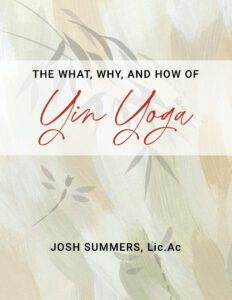In response to my post, “Consciousness, Being and Bliss” I received some questions that I’d like to tackle here. The essence of these questions, I think, boils down to this: “What is spirituality really about? When we engage in a spiritual practice, where is the compass pointed?”
In many forms of spirituality, the compass tends to point towards some kind of ultimate experience or truth (known as metaphysical truth). This experience/truth lies outside normal, everyday experience; it is transcendent to the normal modes of perception, and it is described with qualifiers as being eternal and timeless, blissful and intrinsically liberated.
In Buddhism, nirvana – a placeholder term for freedom and liberation – takes on this kind of transcendent, blissful characteristic.
And a few of you have wondered whether the Buddhist nirvana isn’t just another way of describing the same kind of liberation described in, say, the Upanisads or the Yoga Sutra?
The Buddha compared nirvana to the experience of a fire that is extinguished, or to a flame gone out. In this metaphor, fire refers to a kind of agitation and entrapment that is undesirable. The unawakened mind is compared to being on fire; on fire with craving, hatred and confusion. And this metaphor has led to various interpretations and questions about what it signifies. With the experience of nirvana, is the flame that is snuffed out released to some other dimension of reality whereby it is freed from the agitation inherent to the experience of burning? Or is the flame-gone-out metaphor simply pointing to a way of being that is momentarily released from the agitation and heat of reactivity?
Often, nirvana is compared to its opposite: samsara. Where nirvana is a liberation of some kind, samsara is seen as a kind of bondage to the wheel of a repetitive existence –– usually, referring to an endless wheel of birth, death, rebirth. Here one is bound to this cycle, ad infinitum, until nirvana is realized and, only then, is one no longer trapped by the endless machinations of samsaric existence.
For this discussion,I think it’s helpful to contrast two potential interpretations of these terms – samsara and nirvana – and compare a metaphysical view with a pragmatic view of their meaning.
A metaphysical view of the samsara/nirvana dichotomy describes a life process of interminable birth, death and re-birth, whereby one is propelled from life to life, consigned to endless rounds of pain, illness, and death. Of course, there will be high points too: love, connection, poetry, good food, happiness, etc. It’s not all suffering, as it is sometimes portrayed. Rather, life is an nonstop oscillation between pleasure and pain. And in this metaphysical model, nirvana is viewed as a literal ‘stepping off’ of this oscillating wheel. The proverbial attainment of nirvana, ie. Enlightenment, is a liberation from life, itself. You’re off the wheel, once and for all.
And certainly, in the Buddha’s words, there are passages suggestive of such a reading. Here the ‘unborn’ is a synonym for nirvana.
“There is, monks, an unborn[1] — unbecome — unmade — unfabricated. If there were not that unborn — unbecome — unmade — unfabricated, there would not be the case that escape from the born — become — made — fabricated would be discerned. But precisely because there is an unborn — unbecome — unmade — unfabricated, escape from the born — become — made — fabricated is discerned.” (Udana, 8.3, Thanissaro Bhikkhu translator)
In other words, nirvana is an escape from the world.
A pragmatic view (and this interpretation is heavily influenced by Stephen Batchelor’s work) by contrast, sees the samsara/nirvana relationship more in terms of this world dynamics. Here samsara is a word that refers to a repetitive way of living that is conditioned by reactivity (greed, hatred and delusion). A popular definition of neurosis might similarly describe a samsaric mode of living: doing the same things again and again, expecting different results, and feeling dismayed by the inevitable frustration that ensues. When, through the development of wisdom and understanding, the flames of greed, hatred and delusion ‘go out,’ (if only temporarily) the experience of nirvana is a freedom of life. The life experience is freed from reactivity, creating the potential for new and creative modes of engagement. And there are interpretations of early Buddhist teachings that do seem to support this view:
Bhikkhu Bodhi, a well-respected American scholar/monk, describes nibbana (Pali for nirvana) as: “[nirvana] itself, the goal of the teaching, is defined quite clearly as freedom from greed, hatred and delusion.” (Purification of Mind)
Another Buddhist scholar, David Kalupahana puts it like this: “What is achieved with the attainment of freedom (nirvana) is the ‘appeasement of dispositions’.” Or another way of saying this is that the experience of nirvana is the “quelling of reactivity.”
So within this distinction between the metaphysical and the pragmatic, we might work hard to transcend the samsaric condition or we might apply ourselves to understand the samsaric condition in order to free ourselves from reactive conditioning.
My intention in presenting these views is not to convince you of the truth of one over the other. Rather, I’m presenting them as a way of encouraging you to examine how they might operate in your practice. Over the years, I have become increasingly sympathetic to the pragmatic perspective. But, ultimately, my hope is that you will come to know for yourself what things lead to the peace of ease, contentment and non-agitation.
Originally published on October 25, 2016
Practice Opportunities:

